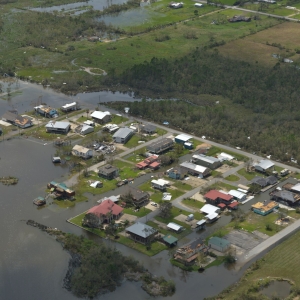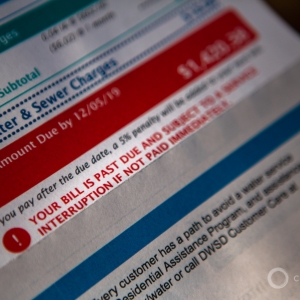The Stream, September 2, 2020: U.S. Schools Could Face Legionnaire’s Disease Outbreaks Due To Stagnant Water
The Global Rundown
A new report reveals schools across the U.S. could face outbreaks of Legionnaire’s disease. A freshwater abyss in the Czech Republic is deeper than originally thought. Severe flooding kills over 50 people in Niger. The Trump administration loosens rules for wastewater from coal-fire power plants across the United States. The world’s largest wetland in Brazil is burning, but the fire is often invisible.
“Sometimes you control a fire and it’s not really dead, it’s just sleeping.” – Lieutenant Jean Oliveira, who is leading firefighting efforts in Brazil’s Pantanal. Pantanal, the world’s largest wetland, is burning itself from below the earth’s surface. Vegetation compacted under the marshy flood water during the wet season dries out as ponds and lagoons evaporate, leaving flammable deposits underground that can continue to smolder long after visible flames die down. Brazilian firefighters are battling to put out raging flames across the country, but fires in the Pantanal are particularly challenging to subdue. The wetland has recorded almost 4,700 “hot spots” this month, the worst rash of fires since August 2005. The only way to combat underground fires is to dig a trench around it, according to state firefighter Lieutenant Issac Wihby. Reuters
Latest WaterNews from Circle of Blue
Hurricane Laura Critically Damages Louisiana Drinking Water Facilities – Nearly a week after the Category 4 storm, dozens of water systems are not operating, and about 20 suffered significant damage. It may be weeks before they are repaired.
Water Serves Length and Breadth of $1.9 Trillion Texas Economy – Across Texas, ties between water and the economy are revealed in innumerable places, in sturdy connections that bind the state together.
HotSpots H2O: First Covid Case Linked to Community Spread Rattles Gaza – Gaza authorities announced last week the first Covid-19 case in the Palestinian enclave that was spread through the community amid health inequities, ongoing conflict and a longstanding lack of adequate water in the Gaza Strip that have left two million Palestinians intensely vulnerable to the Covid-19 pandemic.
What’s Up With Water—August 31, 2020 – This week’s episode looks at the eradication of the wild poliovirus in Africa, insecure groundwater supplies globally and the threat of cyanobacteria in the Des Moines River.
By The Numbers
51 The number of people found dead after severe flooding in Niger this month that destroyed homes and displaced thousands of people. Flooding is common during the rainy season in Niger, which is one of the world’s least developed countries. Reuters
9 The number of schools across the United States that have found Legionella bacteria in their water in the last week. A new report from the New York Times found that schools reopening across the United States could face outbreaks of the waterborne Legionella bacteria, which causes Legionnaire’s disease. The bacteria can form in stagnant water and then disperse through the air and be inhaled when the water is running again. Experts worry that water in schools have been left stagnant since the Covid-19 pandemic forced them to shut down in March, and that schools don’t have plans or effective guidance from health authorities for dealing with the effects of prolonged shutdowns. The usual guard against Legionella is by flushing the water, and then testing the water for bacteria, although some schools don’t have the budget to run such tests. The New York Times
In context: ‘Deadly’ Consequences If Stagnant Water in Shuttered Buildings Is Not Properly Addressed
Science, Studies, and Reports
The flooded caverns of the Czech Republic’s Hranice Abyss are one kilometer (0.6 miles) deep. The freshwater cave system is now twice as deep as previously thought. Researchers say that contrary to prior beliefs, the abyss formed as groundwater seeped down from the surface, which could call into question the origin of other deep caves. Using a combination of geophysical techniques such as gathering data from an aboveground array of electrodes and using sensors to look for tiny variations in the tug of gravity, scientists were able to reveal a system of deep, trenchlike caverns which could attract tourists and boost the economy. Journal of Geophysical Research: Earth Surface
On the Radar
The Trump administration has loosened rules for toxic water pollution from coal-fire power plants. Obama-era regulations required coal plants to upgrade their wastewater systems to treat arsenic, mercury and other heavy metals. The EPA has argued that even with laxer standards, coal plants will achieve the same pollution reductions estimated by the Obama administration and that the new rule “shows President Trump’s commitment to advancing American energy independence and protecting the environment.” Betsy Southerland, an Obama EPA water official, said the agency is counting the pollution reductions from some efforts it has made voluntary like using water treatment technologies that are more effective than what the agency has required. The Guardian
Jane is a Communications Associate for Circle of Blue. She writes The Stream and has covered domestic and international water issues for Circle of Blue. She is a recent graduate of Grand Valley State University, where she studied Multimedia Journalism and Women, Gender and Sexuality Studies. During her time at Grand Valley, she was the host of the Community Service Learning Center podcast Be the Change. Currently based in Grand Rapids, Michigan, Jane enjoys listening to music, reading and spending time outdoors.







Leave a Reply
Want to join the discussion?Feel free to contribute!